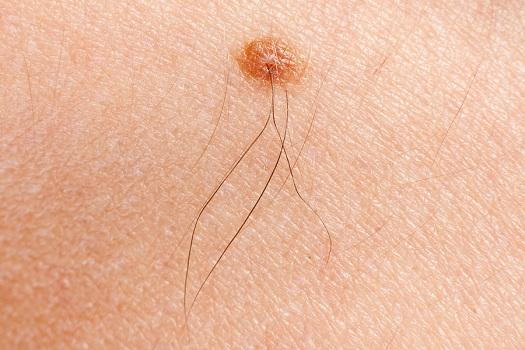The Skin Cancer Foundation says that one in five people in the US will develop skin cancer. That's a whopping 20 percent, a statistic well- worth our attention. At South County Dermatology in East Greenwich, RI, your board-certified dermatologists, Dr. Robert Dyer and Dr. Vincent Criscione, want you aware of the kinds of skin cancers, how they are treated in East Greenwich and ways to prevent them.
worth our attention. At South County Dermatology in East Greenwich, RI, your board-certified dermatologists, Dr. Robert Dyer and Dr. Vincent Criscione, want you aware of the kinds of skin cancers, how they are treated in East Greenwich and ways to prevent them.
Kinds of skin cancer
There are three types: basal cell, squamous cell and melanoma. All three affect the outer layer of the skin called the epidermis, with basal cell located most deeply around sweat glands and hair follicles. Melanoma is best known for its virulence and high morbidity and mortality rates. All kinds are linked to sun exposure.
What skin cancer looks like
Basal cell, squamous cell, and melanoma look different. Common to all, however, is location: they can appear virtually anywhere on the body. Of course, those areas most exposed to the sun grow cancer more easily.
The American Academy of Dermatology recommends patients look at their skin frequently, using a mirror to visualize the back and other hidden areas or have your spouse help you examine your skin. Know your skin well, and if it changes, the difference will be obvious. Use the following ABCDEs of skin examination:
Asymmetry A mole or other blemish should stay the same top to bottom and side to side. Growth in a new direction may indicate malignancy.
Borders should be smooth--not scalloped or rough.
Color Most benign moles are one color--brown typically, although others may be OK. Watch for color variations throughout the mole as changes may indicate cancer.
Diameter Anything larger than a pencil eraser should be examined by your dermatologist.
Evolution Change is dangerous. If color, texture, shape or anything about your mole looks different, call South County Dermatology for an appointment.
Treatment of skin cancer in East Greenwich
Many skin cancers can be biopsied and treated in-office. If Dr. Dyer or Dr. Criscione suspects a cancerous lesion, he will formulate a treatment plan right for you.
Treatments vary and may be used in combination. They include:
- Surgical excision
- Radiation
- Topical creams
- Cryosurgery (freezing)
- Curettage and desiccation (scraping and use of heat)
Preventing skin cancer
The Skin Cancer Foundation says that the incidence of malignant melanoma in young women has skyrocketed because of tanning and excessive sun exposure during the summer months. So, again, watch how much sun (UV rays) you get, and follow these guidelines:
- Apply sunscreen (SPF 15 or higher), and reapply after swimming or sweating excessively.
- Stay in the shade between the hours of 10 am and 4 pm.
- Wear broad-brimmed hats, long sleeves, and sunglasses.
- See your skin doctor yearly for a skin exam or anytime you are concerned about your skin.
Find out more
The staff at South County Dermatology in East Greenwich, RI loves to teach patients about keeping skin healthy. Call today for your routine appointment: (401) 471-3376.
